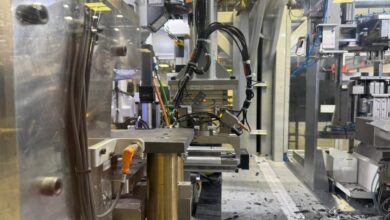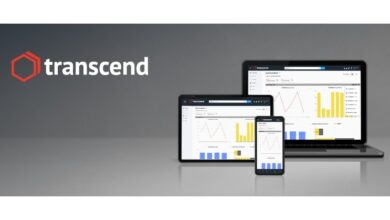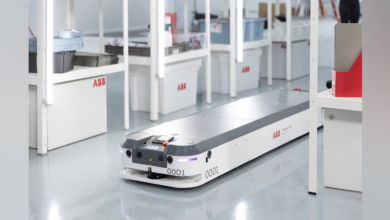5 Q’s With Mark Gagas, Vice President of Sensory Robotics – Center for Data Innovation

The Center for Data Innovation spoke with Mark Gagas, Vice President of Sensory Robotics, a company that develops and promotes robotic safety systems that track both robots and humans and allow safe collaboration with heavy robots that would otherwise be dangerous. Gagas spoke about the inspiration behind Sensory Robotics, the unique features of the technology, and how AI and data are enhancing robotics safety.
Martin Makaryan: What does Sensory Robotics do?
Mark Gagas: Sensory Robotics provides 3D safe sensing technology that works with robotic and autonomous applications, including AI. Our focus is bridging the gap between humans and robots, enabling broader utility.We create a safety bubble around the application that allows workers to harmoniously work with dangerous equipment and allows the facilities to remain fully productive without having to worry about worker safety. Our technology scans for hazards in three dimensions, which is more efficient than traditional reactive measures such as laser gates, pressure mats, or area scanners. The scan allows us to then construct a 3D imaging of the robot or autonomous machine to monitor its surrounding environment and identify possible hazards.
Makaryan: How did the idea about using 3D technology and sensory data to provide machine safety come about?
Gagas: The company was founded by our two co-founders, Chris Edwards and Tristan Fogt. Sensory Robotics started with our co-founders’ passion for interactive gaming. Chris developed a sword-fighting VR robot, and Tristan created a boxing robot, with a strong focus on keeping kids safe in both applications. During an event, we spoke with a representative from a major automotive manufacturer who was curious how our safety features worked. That is essentially what started Sensory Robotics. We discovered that VR virtual fighting is expensive, but safety is not. So we shifted gears and started creating safety applications around 3D point clouds, leaving the gaming aside for a while. Since then, the company has had a very successful trajectory as many businesses and large enterprises have taken interest in our innovative safety application.
Makaryan: What gap in the market did Sensory Robotics address and how was your product unique?
Gagas: Previously, legacy safety devices like light curtains, area scanners, and hard guarding (safety fencing) offered primarily on/off solutions. In contrast, our SR-1 with 3D point cloud technology provides an interactive safety solution, enabling safer and more productive work environments. Our proactive monitoring approach contrasts with legacy safety systems, which are reactive.
One major area where many manufacturers were struggling was how to save space while also providing safety for factory workers to keep them out of harm’s way when working with machines, robots, and other advanced equipment. Sensory Robotics essentially eliminated that dilemma because now a factory can deploy a robot in the middle of the factory space and not worry about extreme or expensive safety measures. Additionally, our technology has allowed them to increase productivity by adding more staff in the same space. Another area where we have really made a significant impact is productivity. When you are a factory worker and have to constantly worry about the robots and equipment you work with, naturally your speed and productivity is not as high as it could be. Our safety solution also addressed that issue and increased productivity for many of our customers.
Makaryan: How does the company use AI and data to enhance its safety product?
Gagas: As AI becomes more ingrained in autonomous factory operations, we are working to create safety solutions by both harnessing its power and addressign AI-related safety concerns. AI models operate on data, and our system collects data during its operations. By supplying data to AI models, we assist in analyzing the production environment: is it safe? If not, why? Can you enhance productivity? Are there frequent nuisance stops, and if so, why and for how long? Leveraging this data in AI enables a deeper understanding of your processes, offering insights to enhance safety and productivity.
Another significant way that we are using data to make our product more unique and more effective is by creating data visualization tools that allow the customers to monitor safety hazards around their equipment and machinery.
Makaryan: What direction is Sensory Robotics taking for the future?
Gagas: I probably should not talk too much about it, but we are also very excited to explore the next generation of our sensors that, instead of being locked in the cell, will be mounted on the robot itself to look out, providing more accurate visualizations of the safety environment around the robot. With this technology, robot manufacturers can imbed our solution in the robot and get a fully autonomous and inherently safe product to the market. SR-2, our second-generation solution entering the research and development phase, will eliminate the need to purchase a robot and then safety for it separately.



